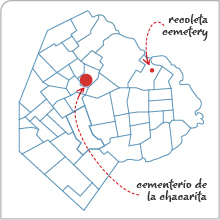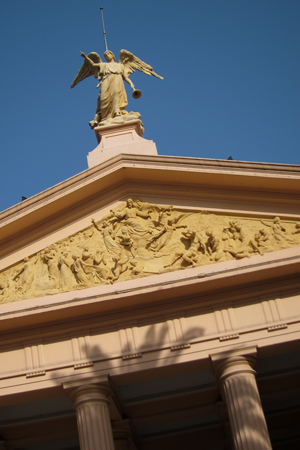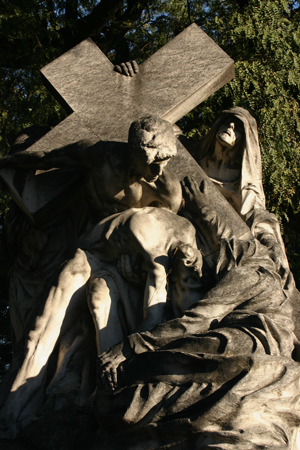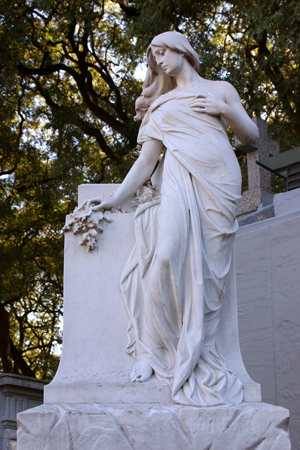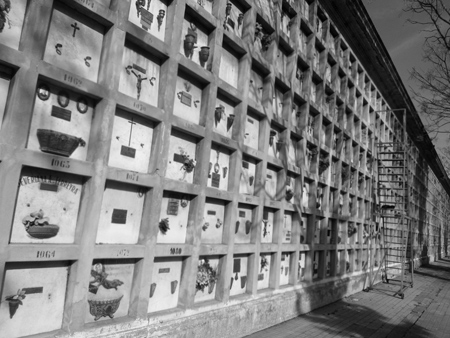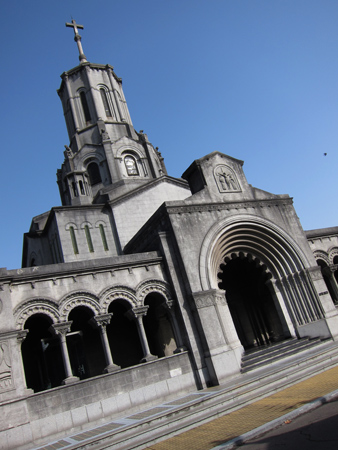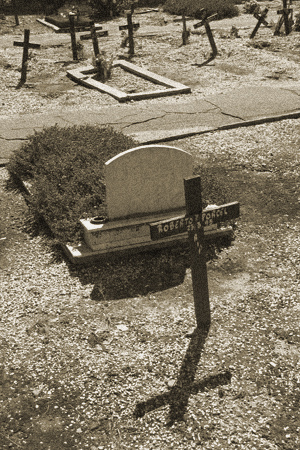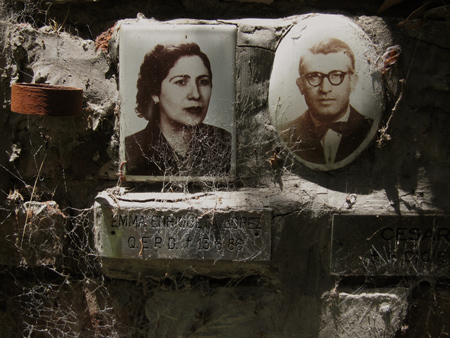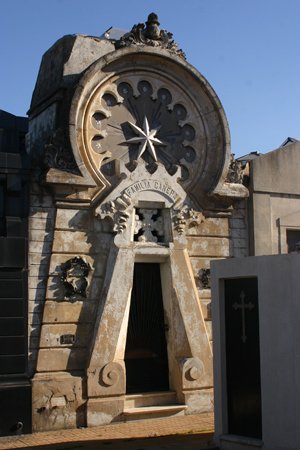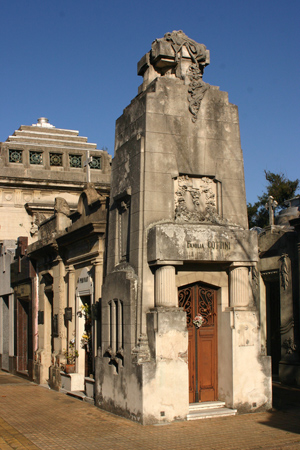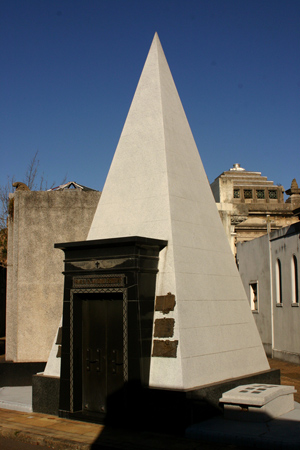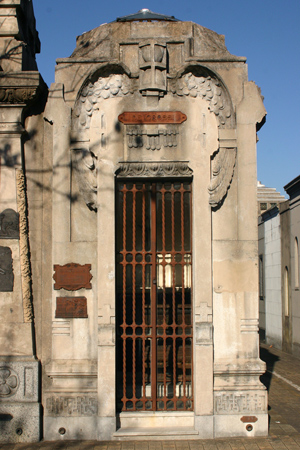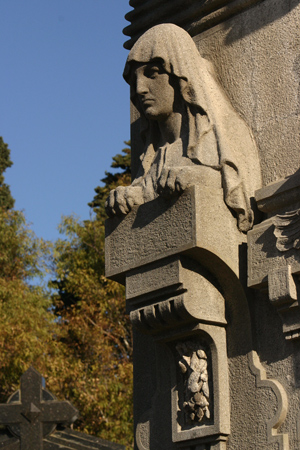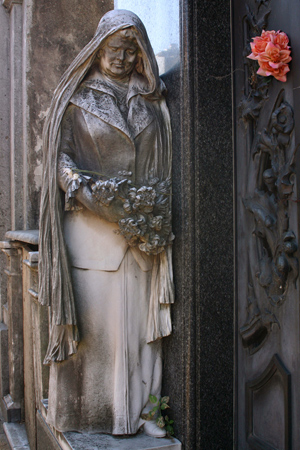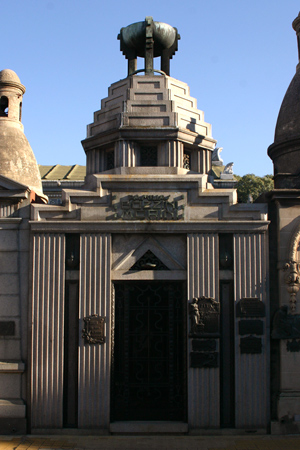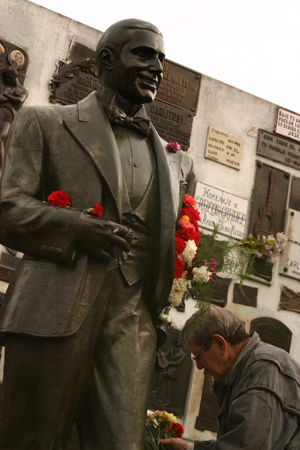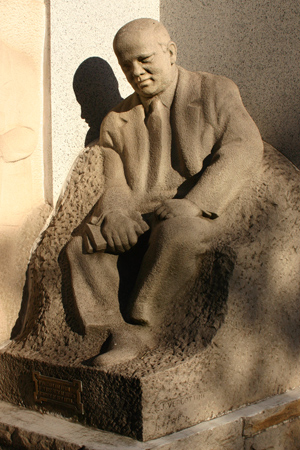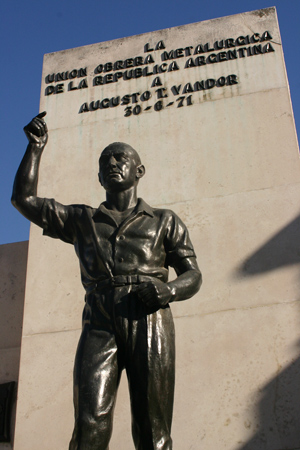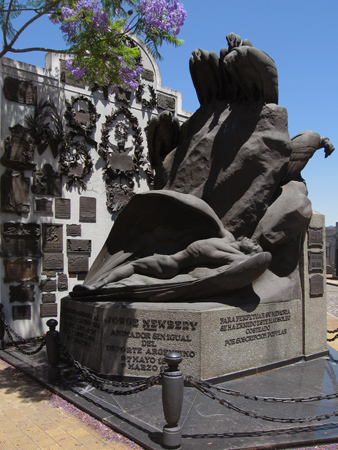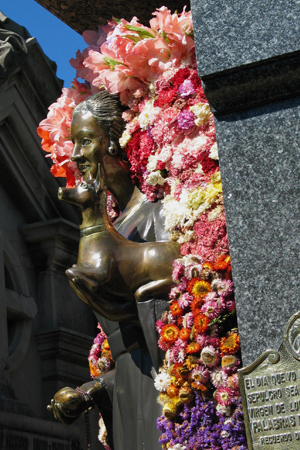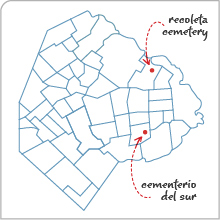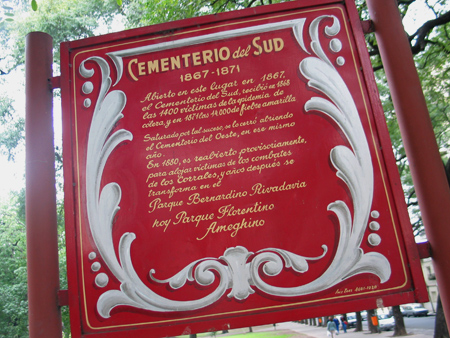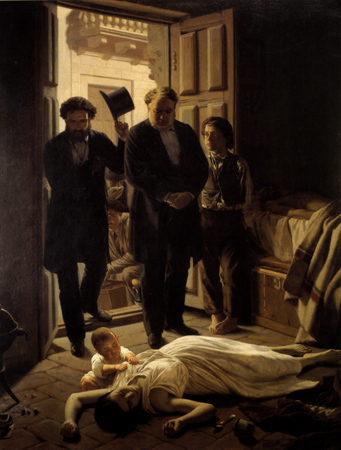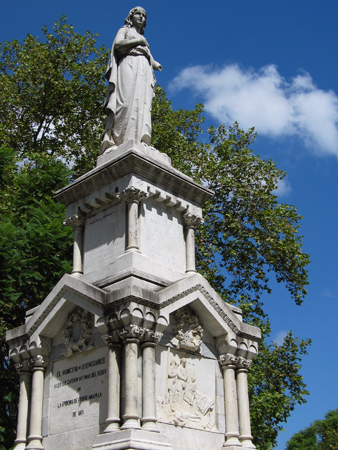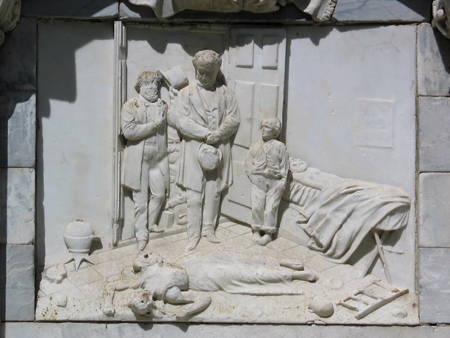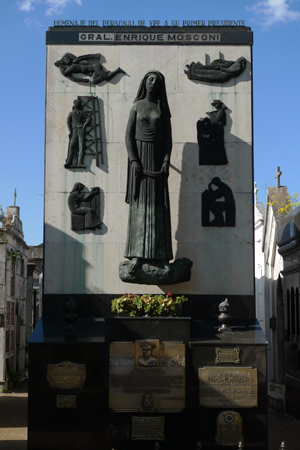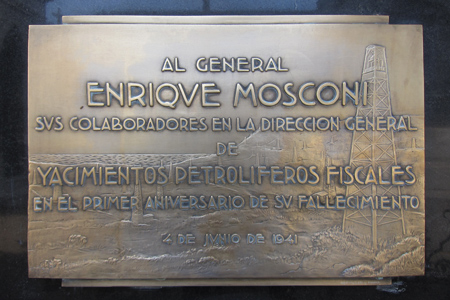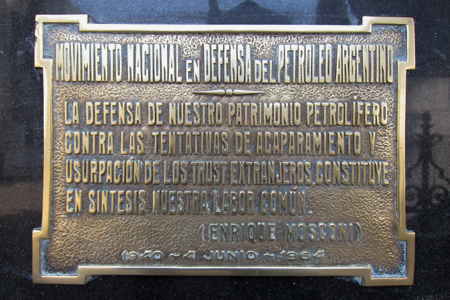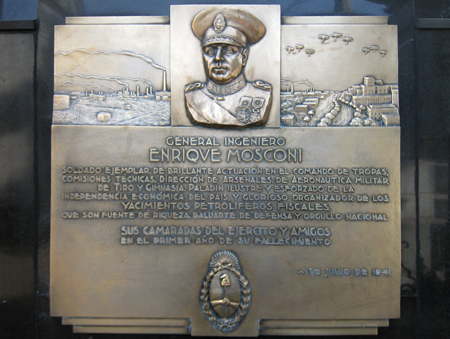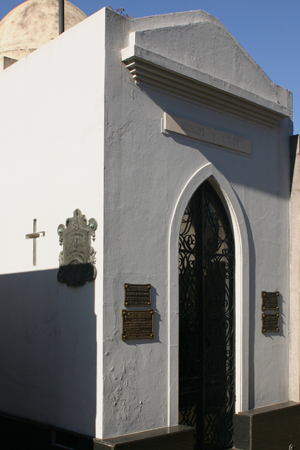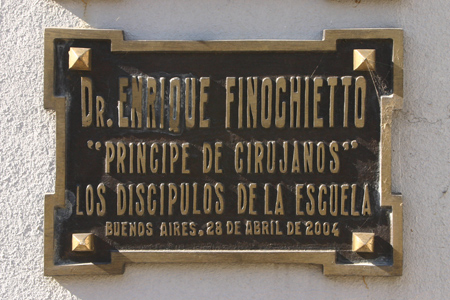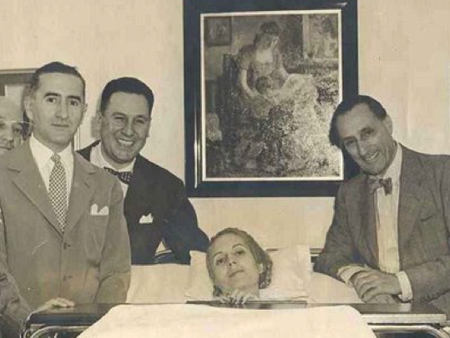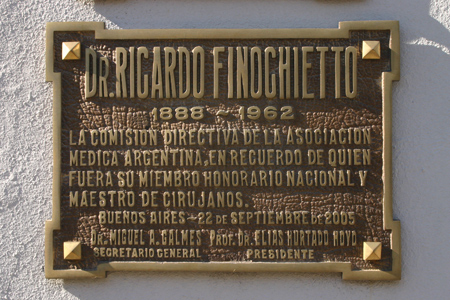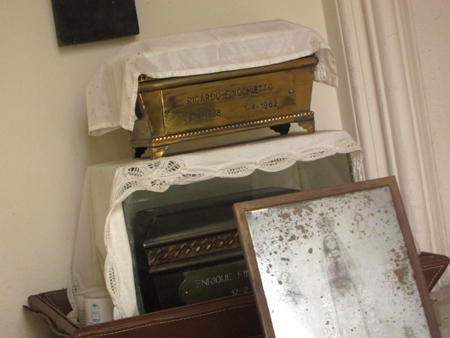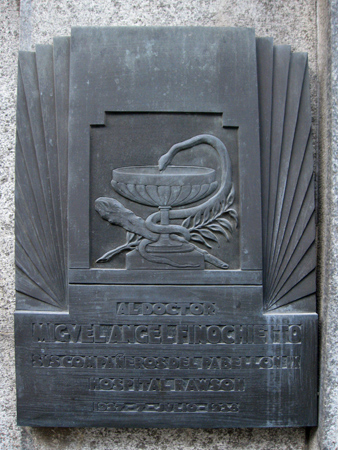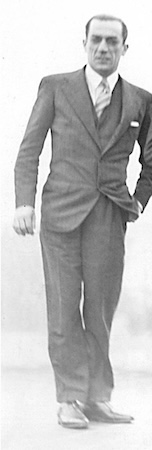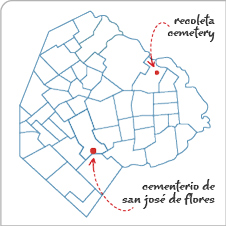
Like Recoleta Cemetery, the Cementerio de San José de Flores took its name from the adjacent church (originally located between Avenida Rivadavia & Ramón Falcón). What better place to ensure a divine afterlife? In 1807, Flores had yet to be incorporated into the city limits of BA so the town’s early residents were buried there. Moved in 1830 & again in 1867, the cemetery was enlarged to 27 hectares in 1979. Not as big as Chacarita Cemetery but certainly big enough.
The first thing that struck me about this cemetery was its location… up on a hilltop. There are so few hills in Buenos Aires that you notice when you’re on top of a big one. Only a small portion of the site had mausoleums so it was really nonstop graves as far as the eye could see.
One modern section is similar to the underground catacombs of Chacarita, but I spent most of my time checking out the architecture. The fancy entrance gate from 1868 by Juan Buschiazzo (same architect who constructed the entrance of Recoleta Cemetery) & the mausoleum section seem out of place after the cemetery’s expansion, now completely surrounded by graves. At least the gate was not demolished:
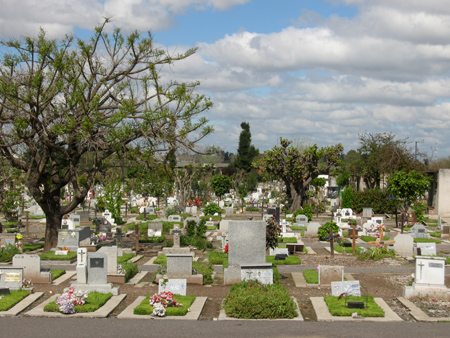
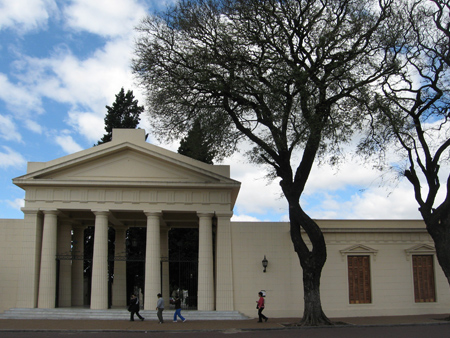
Something else that’s a bit out of place because no doubt it has been moved from its original location is the Flores family tomb. They founded the town & were its most illustrious residents. At least they have a great view now:
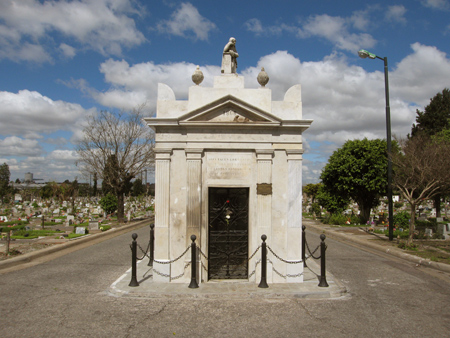
An interesting detail here that isn’t found as often in Chacarita or Recoleta is personal references. These nameplates can be found above the main door where the family name would be:
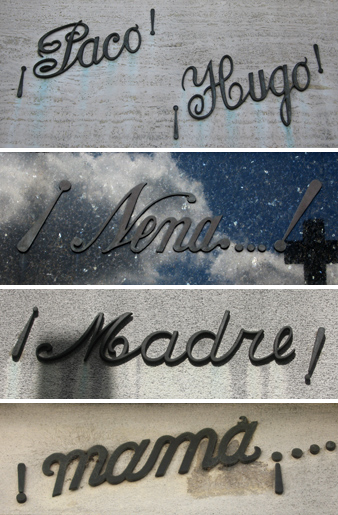
There were some collective mausoleums as in Chacarita. The second one is for the Navy… complete with steamship design:
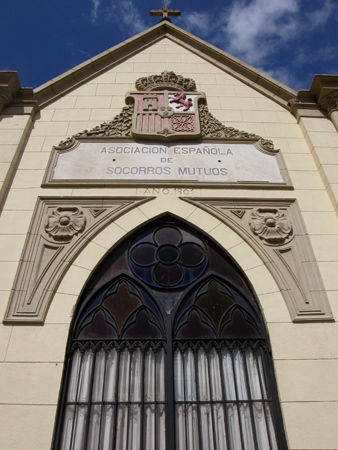
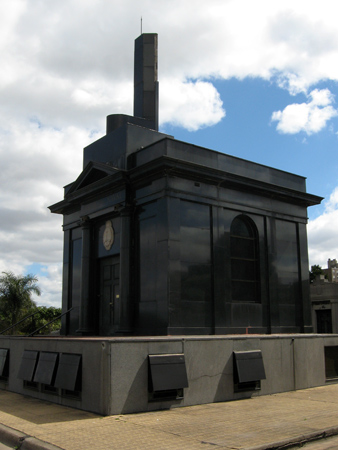
My personal favorite was the monster concrete crosses on the mausoleum for staff of the Obras Sanatarias de la Nación:
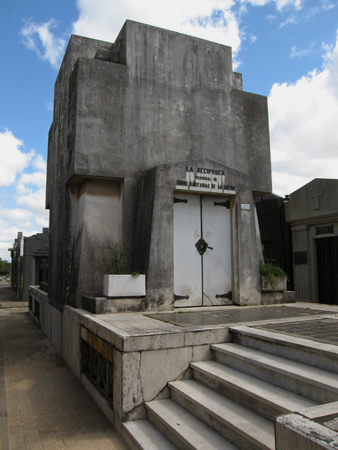
A few more for the Instituto del Buen Pastor, a group of monks in a small Neogothic castle & a little late Art Nouveau:
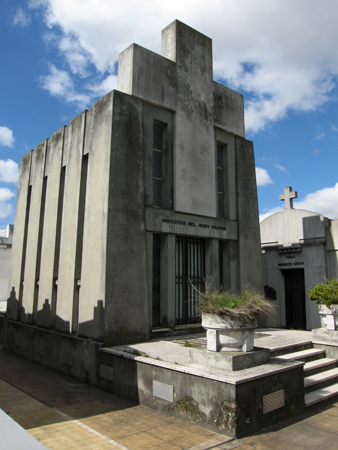
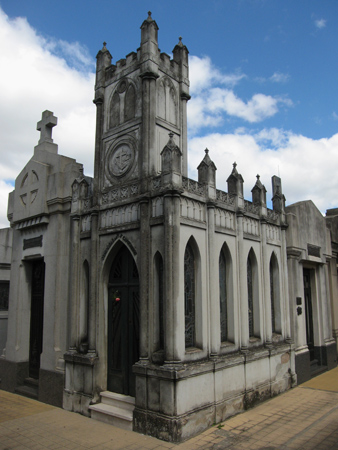
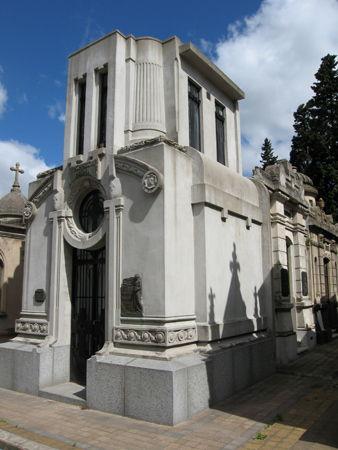
There wasn’t much in the way of sculpture, but the following piece stood out:
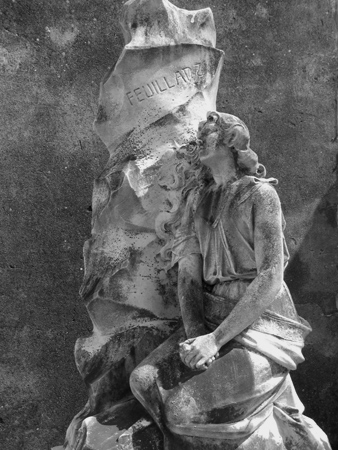
Finally, a few tombstones were mixed in with the mausoleums. I know this is difficult to read but it’s for an immigrant from the Lower Pyrenees in France who died in 1871. The inscription is touching:
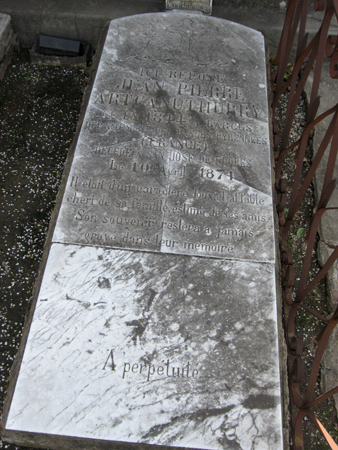
So if you’re in the neighborhood for Korean food, pop in for quick walk around & enjoy the view. You’ll likely be the only one wandering around the mausoleums.
Originally published on 19 Sep 2007 in our sister site, Endless Mile.
—————————————————
Other Buenos Aires cemeteries: Cementerio del Sur • Chacarita • San José de Flores • Cementerio de los Disidentes • Cementerio Británico • Cementerio Alemán
2 Comments